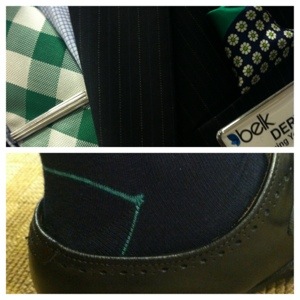Here we are, halfway through October and the weather should be cooling down over the next few weeks. But, just because it’s fall/winter doesn’t mean you don’t have to still look your best at work. So how can you look great and still stay warm? Layering my friends. Layering.
Now, you don’t want to walk into the office (or happy hour or church or anywhere) looking like four random racks from the Goodwill so you have to have a plan of action when it comes to layering in the winter. Here’s a pretty good formula for making sure that you stay warm and still remain stylish. (If you’re in a moderate region, it may not be cold enough for this full outfit until December so bookmark this post and come back to it later).
First layer: Underwear
I don’t care what season it is, you CANNOT skip out on the underwear. Whether you’re a boxers or a briefs guy, please put on some underwear. And a tank top/A-Shirt may work to your advantage too just to provide some extra insulation if needed.
Second layer: Thermals
Thermals/Long Johns are a great way to insulate the body during the coldest times of the year. They are worn in place of a regular undershirt and a must-have in every man’s wardrobe if he lives in or plans to ever travel to an area where the temperature drops below 40 °F.
Third layer: Slacks/A Suit and a Shirt
You’re still going to work. You still have to wear pants. You still have to wear a shirt. But, since you have two layers clothing on underneath this one, you may want to opt out of wearing your most well-tailored shirt and suit. It will create for a pretty awkward day for you and those in your office. Just my suggestion.
Fourth layer: Sweater
You can wear a sweater between your suit jacket and your shirt. Make sure that it compliments your outfit though. You don’t want to be wearing a sweater the color of split pea soup with a black suit (or any suit that I can think of for that matter).
Fifth layer: Outerwear
In the event that you are dealing with unbearable cold and more than a suit jacket/blazer is required, it is time to pull out a top layer. In a formal business setting, I recommend a peacoat or a 3/4 length as a winter coat. Anything else will take away from your shirt and tie. However, if business casual is the dress code, you can get away with a well-kept jacket. Also, gloves, hats, and scarves are acceptable until you sit down at your desk. Then they need to be removed unless there is some kind of heating malfunction in the office that day.
Don’t be afraid to have fun with layering. It can really help you find your fall/winter style and add a whole new weapon to your arsenal of style. And, if you have any other suggestions, let me know. The more, the merrier.


